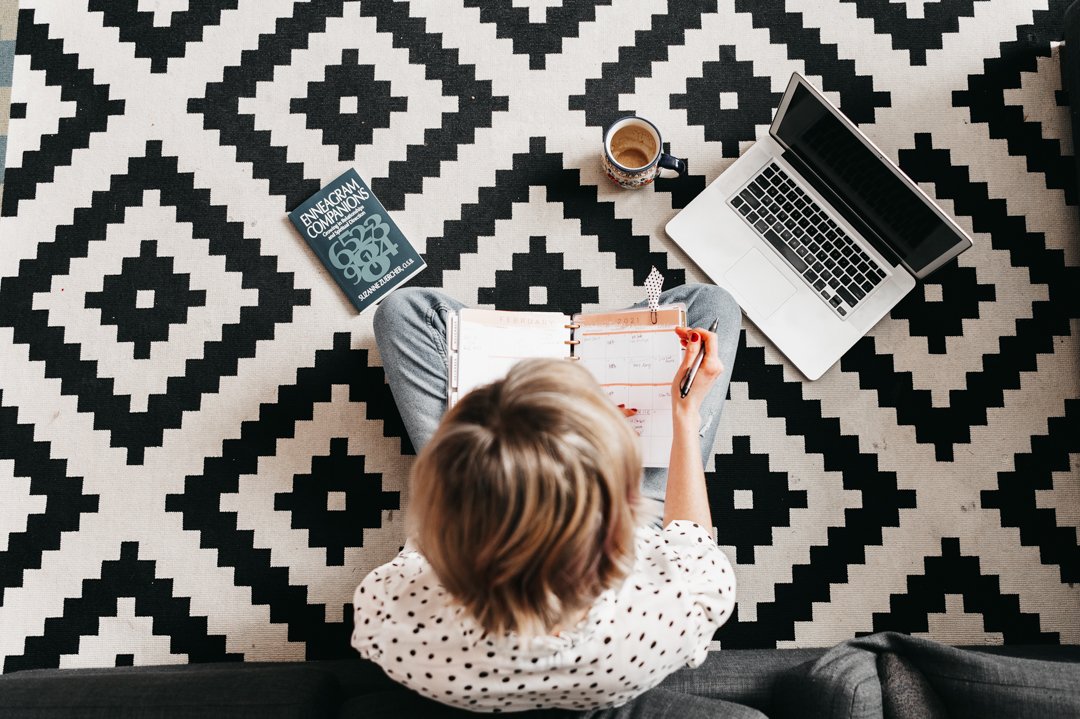Using the Enneagram in therapy (what is it, how it helps, how to get started)
About ten years ago I first heard of this tool called the Enneagram. Since then it has been all over the internet and Instagram, so you may have heard of it too
But if you haven’t, the long story short is this:
The Enneagram (any-a-gram) is a self-discovery tool.
But it isn’t like your typical personality profiling, looking at external qualities of how you act in the world. Rather it looks at your motives, and how that informs how you act in the world.
There are nine types, each with their own motives
The enneagram also outlines how you might feel/act under stress and when you are in a growth state.
The nine types of the Enneagram
People I work with often find the most useful information they learn from finding their type is this:
Gives language that describes the things they know about themselves but haven’t given words or awareness to (seeing our blindspots).
For example, when I learned I was a Type 9, I could see that I was conflict-avoidant but had never really paid attention to how it showed up in my life or had a term for it. A Type 2 might realize how they try to find value by service to others. A Type 3 might realize their constant drive to accomplish and succeed at things.
Understand how they act under stress
When we are in a stress response our brain can go ‘offline’ in a sense (it is called the amygdala highjack). We are on autopilot.
The way we respond to stress impacts our relationships and our lives. So getting awareness of what we are doing, helps us understand what changes we could make, in order to get a better outcome.
Understand how they act when they are growing
The Enneagram helped me see positive qualities in myself that I wasn’t fully aware of. Often, we take the approach of managing our weaknesses, rather than stepping into our strengths.
Learning my type gave me permission to own these good things about myself.
Helps improve their relationships
With all the reasons above (learning your own cycles, motives, stress responses, and strengths) you can show up better in a relationship because you are ‘owning your stuff’.
If you know the Enneagram Types of people in your life, you can also better understand their ‘own stuff’.
The Enneagram opened my eyes to see just how differently we can all approach the world. It gives me appreciation for all the Types in my life, and helps me love their strengths and meet them where they are at.
I have been using the Enneagram in my coaching for about 6 years now.
A great value to me is that it helps me get to know a client well in a shorter time. By knowing someone’s Enneagram type, we have a lot of the groundwork already in place for the conversations and strategies we can use.
Of course, each person is unique, but we can use the framework of the Enneagram to review what motives, behavioural patterns and emotional tendencies a client is likely to experience.
This allows us also to be more precise with the types of interventions and issues we use in the coaching and counselling process
Finding your type
A lot of clients come to me already knowing their type. However, for those that don’t, I do help them out with this.
We often start with this free self-assessment quiz.
It will help you narrow down the possible types you could be.
Then take those possible types and read about them (some places you can learn more The Enneagram Institute, Simple on Purpose Enneagram 101, Simple on Purpose Enneagram + Motherhood Series).
Clients will bring me a couple of types they are considering and I will help them narrow it down.
If you want to learn more about using the Enneagram in coaching and counselling, reach out for a free consult to ask any questions you might have.



